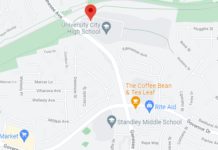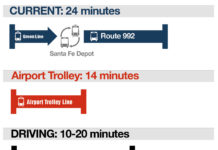By former Councilmembers Donna Frye and Ed Harris and community advocates Catherine Jolley and Denise Friedman
Should more money be taken away from Mission Bay Park to be used in other city parks? Should more commercial development and leases be allowed in Mission Bay Park?
These are just two of the issues that voters will be asked to decide when they vote on Measure J.
To better understand Measure J, it helps to go back in time. The original promise was that part of Mission Bay Park (25 percent) would be used for commercial development and leases such as hotels, etc. In exchange, the money generated from that development would be used to pay for the public improvements in the park. Problem was, the city broke its promise and most of the money was used for other purposes.
To remedy that, in November 2008, a measure called Prop C was placed on the ballot to ensure that 75 percent of Mission Bay lease revenues above $20 million would stay in Mission Bay Park. The other 25 percent would be used for the benefit of other city parks.
At that time, it was estimated that only 8 percent of the lease revenues were being used for Mission Bay Park public improvements. Prop C passed and it seemed that finally the promises to fund the public improvements would be kept.
But one of the authors of Prop C, Mayor Kevin Faulconer, decided to change that by proposing Measure J. Specifically, Measure J would reduce the current Prop C funding formula for Mission Bay Park by 10 percent and use it for other city parks.
The second part of Measure J is probably not known to many people. That’s because the language was added after the mayor held his June 30 press conference announcing it. There has been almost no public discussion about it either. The proposed language would change the definition of Mission Bay Park by allowing the City Council to add contiguous park acreage. Adding more parkland sounds pretty good until you understand what the consequences could be.
If you recall, in 1987 the voters approved a ballot measure limiting to 25 percent the amount of commercial development allowed in Mission Bay Park. That number was based upon the total park acreage at that time. So for every acre of park that is added, another 25 percent of commercial development could be allowed on areas such as Fiesta Island, De Anza or Sea World.
That raises a lot of red flags, especially when one considers it could mean even more hotels on our public parkland. For example, the Voice of San Diego reported last November that “SeaWorld has inked a partnership deal with Evans Hotel Group, the high-powered owner of The Lodge at Torrey Pines and two Mission Bay hotels, to either build or purchase a hotel.”
There are a lot of other issues about Measure J that cause concern. It was placed on the ballot in record time, which limited the public’s ability to analyze the proposed changes. The committee that is appointed to be the oversight board for Mission Bay Park learned about the measure the same day the mayor held a press conference announcing it.
Local community planning groups were not informed about the plans either, which is one of the reasons the Pacific Beach Town Council held a public forum on September 21. The community raised many other issues, including why the rush, why was the community left out of the discussion, how does taking more revenue from the park benefit Mission Bay Park and what is the impact on the current priority projects?
People are also concerned about the mayor’s proposal to issue bonds for other parks. How would the interest on those bonds be paid and what are the financial impacts on Mission Bay Park projects?
The bottom line is this – for decades, the promises made about funding the public improvements in Mission Bay Park have not been kept. In 2008, the voters finally had a chance to fix that. But now, less than 10 years later, Measure J would divert even more money away from Mission Bay Park. And because of the lack of community outreach, we still don’t know if the change to the definition of Mission Bay Park would result in allowing more commercial development in the park. Unfortunately, it’s a safe bet that it would.
Measure J raises more questions than it answers. For these and many other reasons, we urge a no vote on Measure J.



